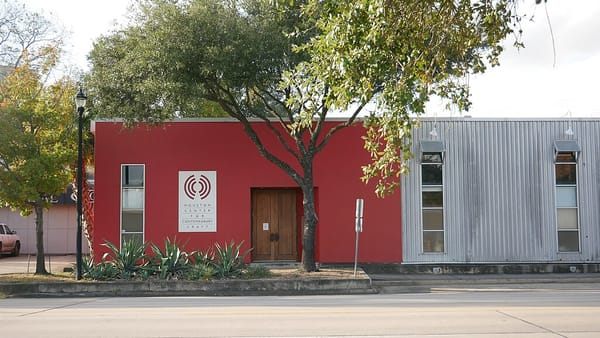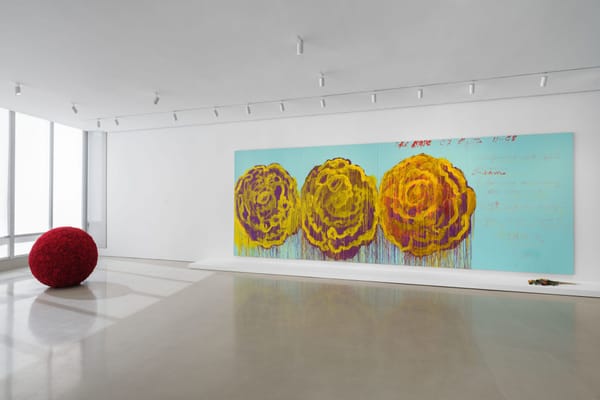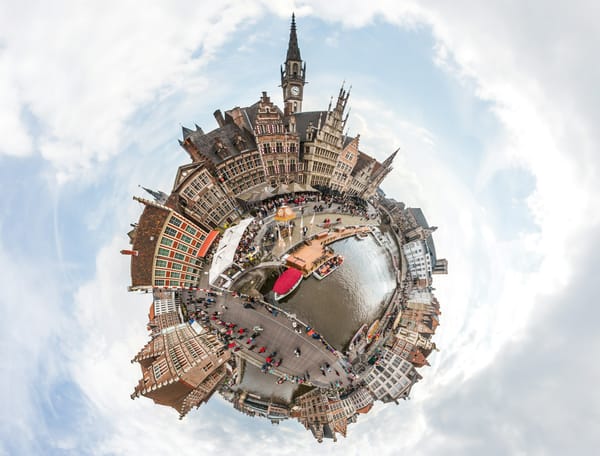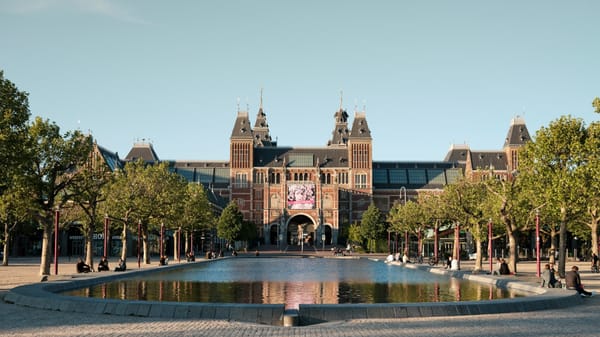Don’t Look Back With Teeth: UNIT Gallery’s Survival Gig
Curators Beth Greenacre and Sigrid Kirk stage a festival-style exhibition that swaps swagger for stamina, pitching ’90s legacies against today’s precarity and digital myth-making.
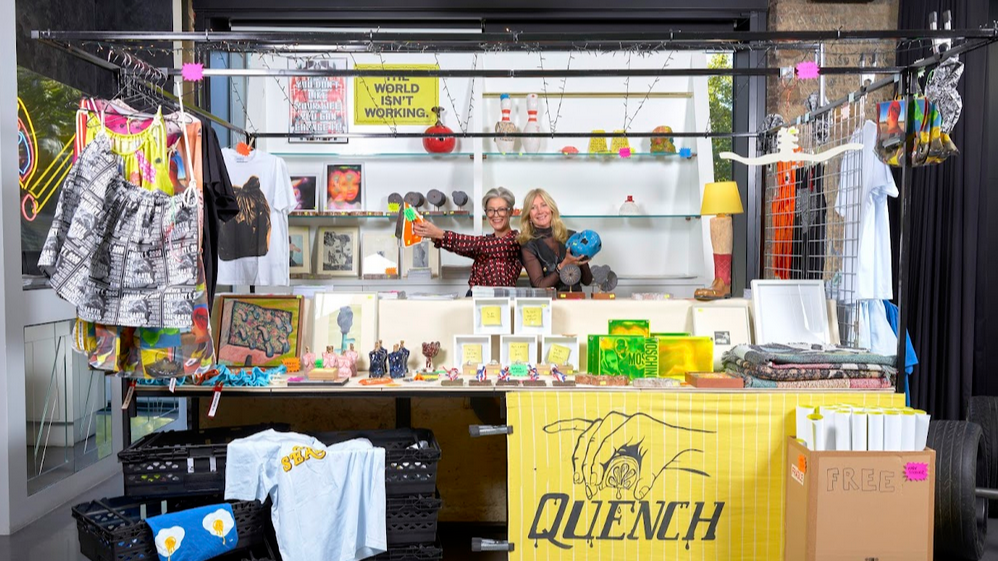
Walk into Don’t Look Back at UNIT Gallery and you’re greeted not by spectacle but by grit. A kiosk bristles with bin-bag T-shirts, ceramic Post-its, and a bronze slice of toast hung like a medal — Bread Winner, by Grace Clifford. Less polished white cube than flea market of survival, it’s the perfect overture to a show that insists, in a precarious moment, that the most radical gesture an artist can make is simply to keep going.
Curated by Beth Greenacre and Sigrid Kirk, the exhibition is staged like a gig — high voltage upfront, then quieter back rooms where fragility takes the mic. “With Don’t Look Back, we set out to create a defining cultural moment that reflects on the evolving legacies of the 1990s and 2000s while looking decisively forward,” the curators write. “It avoids nostalgia for nostalgia’s sake, instead foregrounding experimentation, humour, and the idea of a living legacy.”
The show’s wager is clear: can you re-stage the irreverence of the ’90s without embalming it? The answer isn’t a retrospective but a rehearsal — survival performed as spectacle.
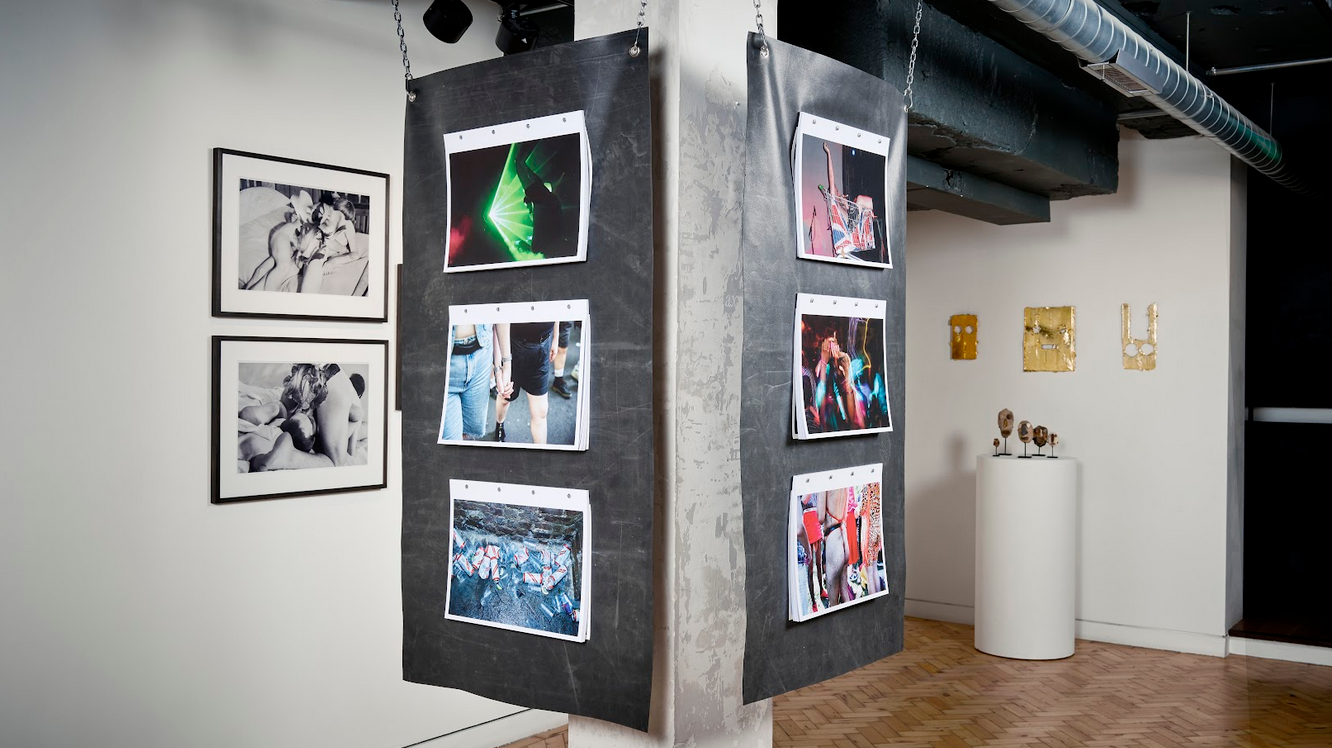
From Cool Britannia to Precarious Britain
The 1990s recession cracked the establishment’s walls, letting in the Young British Artists with their DIY ferocity. Sarah Lucas, Tracey Emin, Gavin Turk, and Richard Billingham turned bin bags, beds, and cheap neon into cultural shrapnel. That swagger was quickly folded into New Labour’s “Cool Britannia,” where once-radical gestures became No. 10 photo-ops.
Don’t Look Back doesn’t bow to those ghosts. Instead it refracts them through today’s fractured lens. Billingham’s family photographs hang like warnings, not trophies. George Shaw’s empty estates and torn flags amplify the mood of decline. Meanwhile, Mary McCartney’s Embrace of Sam Taylor-Johnson kissing a blow-up doll in front of a Damien Hirst installation reminds us how entwined art, music, and media once were — but now reads as surreal satire of its own mythology.
The shift is decisive. As Kirk and Greenacre note, this isn’t swagger reborn but inclusion foregrounded: queer voices, female identities, and working-class perspectives stretch far beyond the laddish narrative once attached to the YBAs.
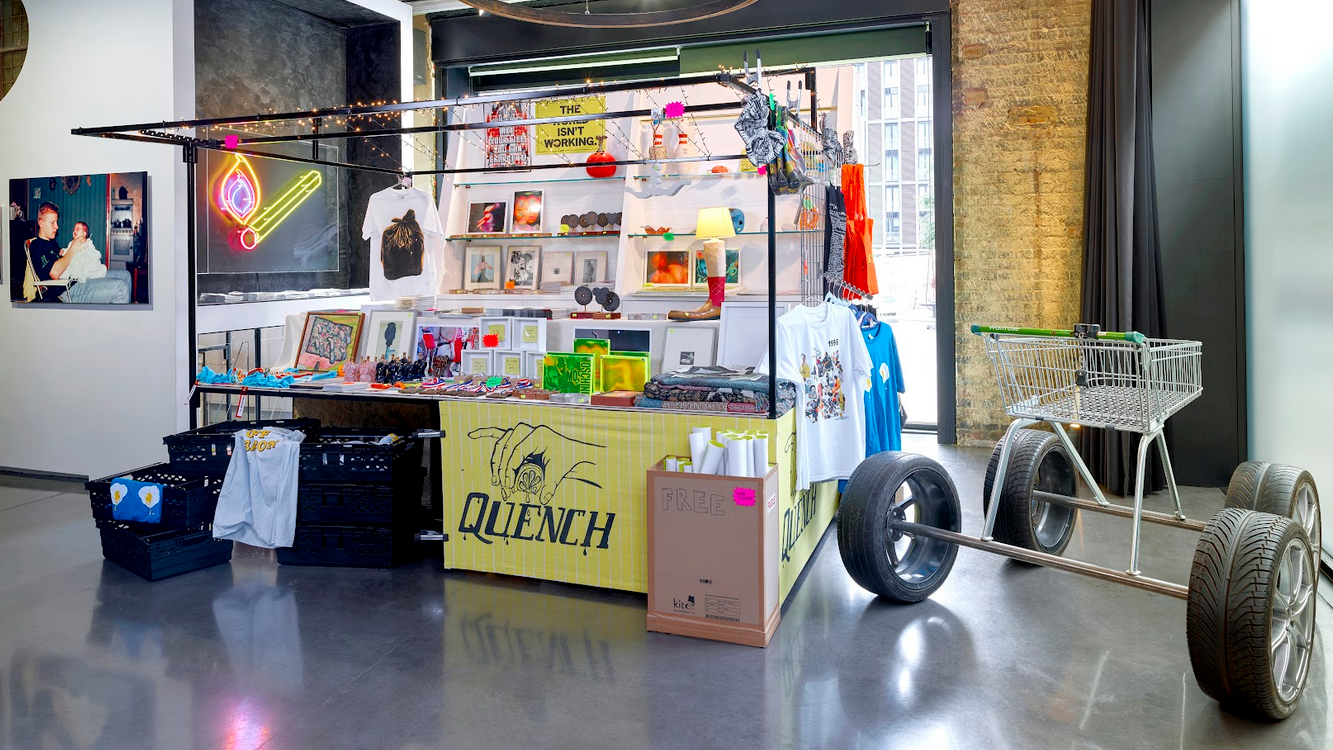
Merch, Main Stage, Backstage
The exhibition unfolds like a festival. At the entrance, Giles Round’s “Quench Kiosk” plays with artist-made editions and textiles as though they were bootleg band merch, echoing Lucas and Emin’s early Shop. Proceeds fund new initiatives, proof that commerce and solidarity can still collide in a single gesture.
On the “Main Stage,” the energy spikes. Emin and Turk’s neons flash with sly irreverence. Mark Titchner’s Ergo Ergot and Lakwena Maciver’s text works read like protest banners transformed into art anthems. Richard Wilson’s pared-down drum kit (Traps, Version 3) rattles like a stripped-back encore, while Thomas J. Price’s golden bust rewires how we mythologise icons. Pam Evelyn’s abstractions pulse like improvised riffs.
Descending “Backstage,” the tempo shifts. Caroline Achaintre’s tufted textile hangs like a theatrical curtain; Abigail Lane’s infamous Bottom wallpaper resurfaces, now overlaid with embroidery; Linder Sterling’s punk montages strip gender apart. Younger artists — Clifford, Bex Massey, Thomas Cameron, Anna Perach — take up the baton, interrogating class, humour, and belonging. The show ends not with swagger, but with vulnerability.
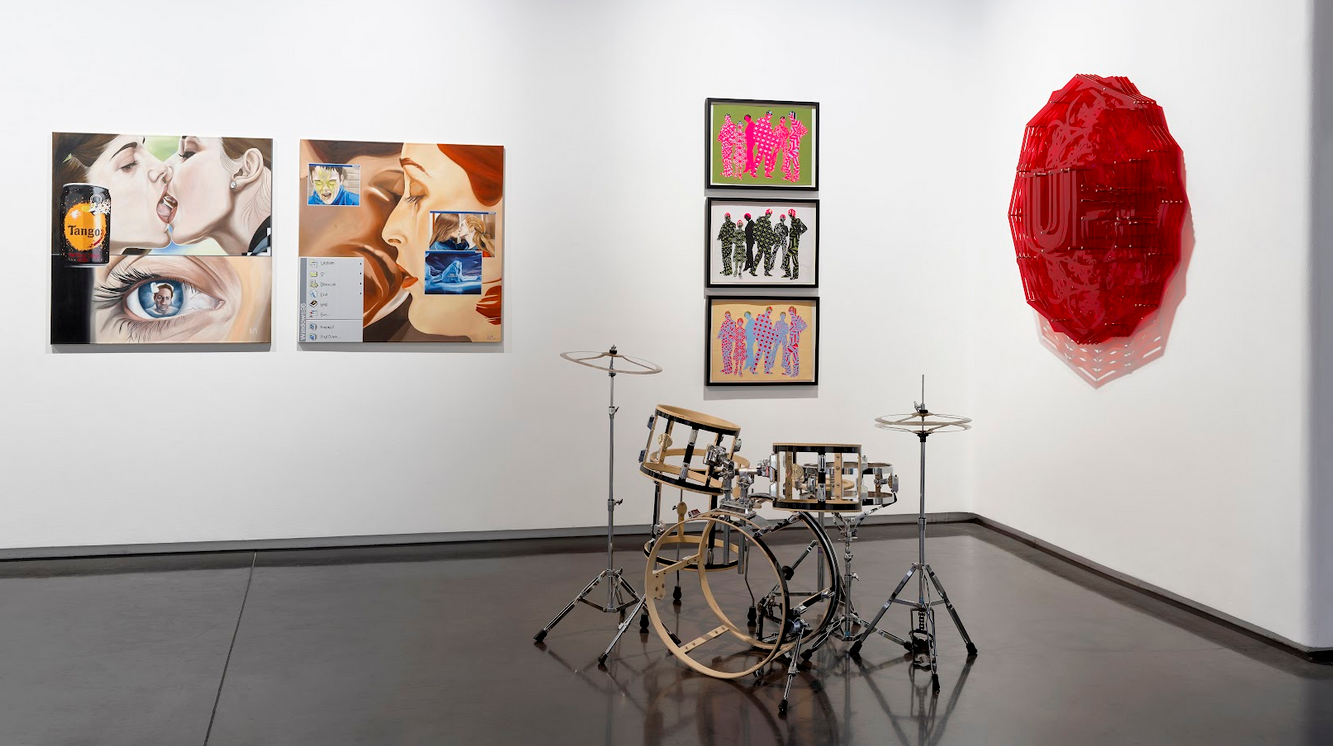
Digital Meadows and Fragile Futures
The most unsettling note comes from Damien Roach’s new video: thousands of web-scraped images for the word “meadow,” collaged into a looping landscape. Once a stage for countercultural free parties, now an algorithmic fantasy, the meadow becomes an uneasy theatre of ownership — who controls memory, who claims nature, who decides what survives.
If the YBAs once declared defiance, Don’t Look Back asks how that defiance mutates in a world where even nostalgia is outsourced to a search engine.
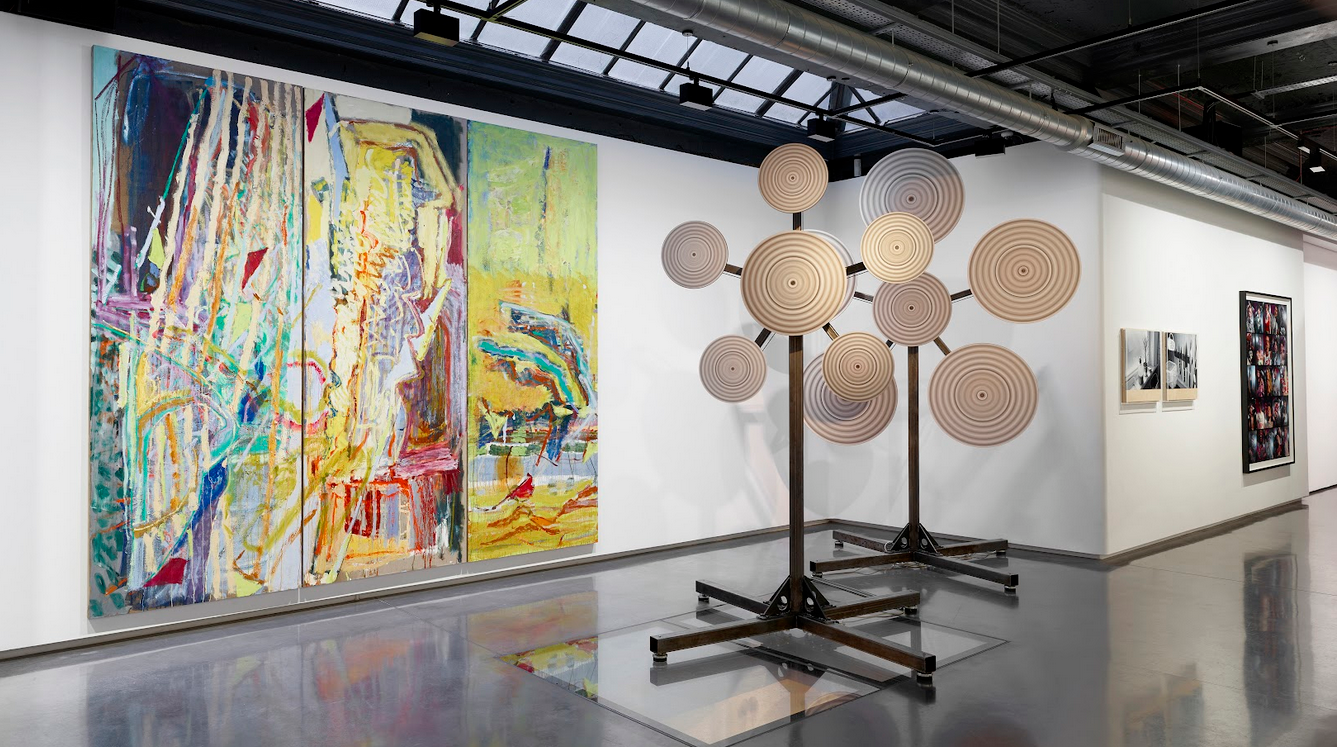
A Gallery in Step With Its Artists
UNIT Gallery positions itself as more than host. “The rebellious spirit of Don’t Look Back is closely aligned with UNIT’s own ethos of giving artists the freedom and independence to create,” say directors Joe Kennedy and Jonny Burt. “The artists that defined the 1990s were similarly unafraid to ruffle feathers, working with a ‘Just Do It’ mentality and operating outside the market. We want to demonstrate that same culture of celebration, enjoyment and inclusivity.”
That ethos matters. In a brittle market, where collectors tire of auction spectacle and look instead for direct connection, UNIT is wagering on independence, intimacy, and a culture of risk.
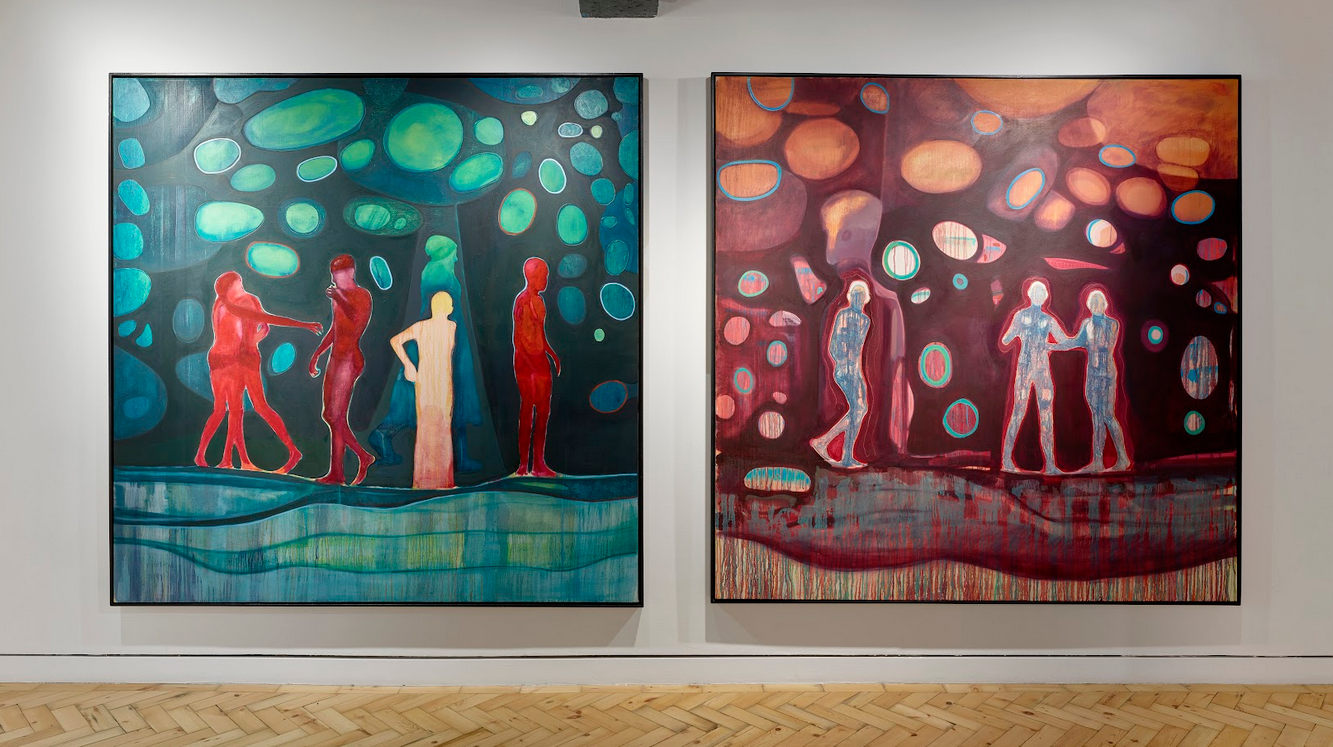
Survival as Headliner
I’ve said it before: downturns refresh ecosystems. After WWII, abstraction. After 2008, street art and social collectives. The question is never whether a bad economy is “good” for art — but what kind of art emerges from collapse.
At UNIT, the answer looks like bin-bag T-shirts, ceramic Post-its, a bronze toast medal. It looks like neons flickering over placards scrawled by the public. It looks like survival, staged as a gig.
And maybe that’s the point. What survives of Cool Britannia isn’t champagne spectacle but the soundcheck grit of artists who never left the stage. The amps are crackling, the lights dimming, and if you listen closely—survival is playing the encore louder than the headliner.
Panu Syrjämäki, Editor-in-Chief
© ART Walkway 2025. All Rights Reserved.


